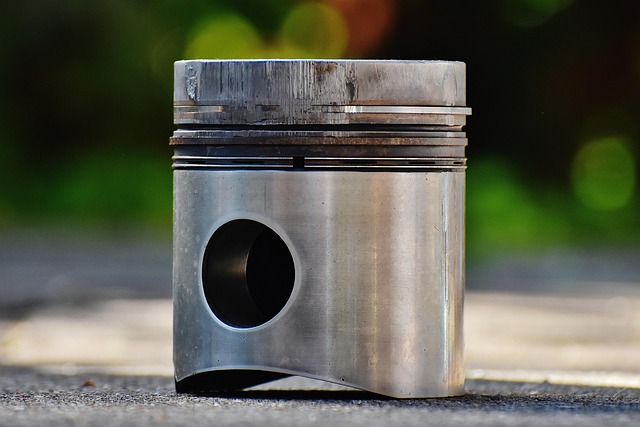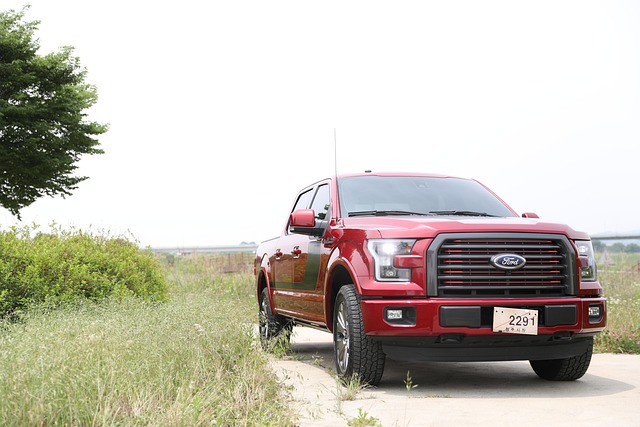Looking to register your car in California? This comprehensive guide walks you through every step. From understanding essential requirements and gathering vital documents, to verifying your Vehicle Identification Number (VIN) with a reliable VIN verifier, this process ensures a smooth experience. Choose a nearby California Department of Motor Vehicles (DMV) service center, complete the registration process, and hit the road legally.
- Understand California Car Registration Requirements
- Gather Necessary Documents for Car Registration
- Verify Vehicle Identification Number (VIN)
- Choose a California Department of Motor Vehicles (DMV) Service Center
- Complete the Car Registration Process at DMV
Understand California Car Registration Requirements

Before diving into the registration process, it’s crucial to understand California’s car registration requirements. These include ensuring your vehicle meets all safety and emission standards set by the state. One key aspect is confirming the Vehicle Identification Number (VIN) through a valid VIN verifier. This step is often facilitated by mobile VIN inspection or verification services that can cross-check the information against official databases, ensuring accuracy.
Additionally, you’ll need to have the necessary documents on hand, such as proof of ownership, insurance, and identification. The process typically involves visiting a California Department of Motor Vehicles (DMV) office, or in some cases, completing the registration online. Always refer to the DMV’s guidelines for the most up-to-date requirements, especially when it comes to specific vehicle types or special circumstances.
Gather Necessary Documents for Car Registration

Before you start the registration process, it’s crucial to gather all the essential documents required by the California Department of Motor Vehicles (DMV). One critical step is to verify your Vehicle Identification Number (VIN) using a reliable method like a mobile VIN verifier or inspection. This ensures the accuracy of the vehicle’s details and helps in preventing fraud.
Make sure you have your car’s registration certificate from the previous state, proof of insurance, and a valid driver’s license. Additionally, you’ll need to provide identification documents such as a passport or state-issued ID card. For vehicles with a lien, you must also include documentation from the lienholder, like a loan agreement or title hold notification. These documents are vital for a smooth registration process in California.
Verify Vehicle Identification Number (VIN)

Before registering your car in California, it’s crucial to verify the Vehicle Identification Number (VIN). This unique 17-character code is a critical component of the registration process and serves as a digital fingerprint for your vehicle. One efficient way to check the VIN is by using a mobile vin verifier or conducting a vin inspection. These tools enable you to cross-reference the provided VIN with authoritative databases, ensuring its validity and accuracy.
A correct VIN is essential as it helps identify specific make, model, year, and key safety features of your car. During the registration process, California’s Department of Motor Vehicles (DMV) relies on this information for record-keeping and to ensure compliance with safety standards. Therefore, taking a few minutes to verify the VIN through a mobile vin inspection can streamline the registration experience and prevent potential delays or issues down the line.
Choose a California Department of Motor Vehicles (DMV) Service Center

When it comes to registering your car in California, the first step is to select a convenient California Department of Motor Vehicles (DMV) Service Center. The DMV offers both in-person and mobile services for your convenience. If you opt for an in-person visit, locate one of the many local DMV offices across the state. These centers are equipped with the necessary tools for vehicle registration, including a VIN verifier. This device ensures accurate identification of your car through its unique Vehicle Identification Number (VIN).
For added flexibility, consider utilizing the mobile services provided by the DMV. A mobile VIN inspection or verification service allows you to get your VIN checked without having to visit a physical location. This is particularly useful if you’re busy or prefer the convenience of getting everything done from the comfort of your home or on-the-go.
Complete the Car Registration Process at DMV

Once you’ve gathered all the necessary documents and information, it’s time to complete the car registration process at a California DMV (Department of Motor Vehicles) office. This step involves submitting your paperwork and ensuring your vehicle meets all legal requirements. Before visiting the DMV, make sure to schedule an appointment, as this can help reduce wait times.
When you arrive, bring along your completed application form, proof of insurance, registration fees, and your valid driver’s license or state-issued ID. A key part of this process is the verification of your vehicle’s VIN (Vehicle Identification Number). You can do this through a mobile vin verifier or schedule a mobile vin inspection to ensure the accuracy of the information before proceeding with registration.
Registering a car in California is a straightforward process once you understand the requirements and have all the necessary documents. Using our guide, from verifying your Vehicle Identification Number (VIN) with a reliable VIN verifier to completing the process at a local DMV service center, you’ll be on your way to becoming a California driver in no time. Remember to keep your registration up-to-date to avoid any legal issues and ensure a smooth driving experience.
